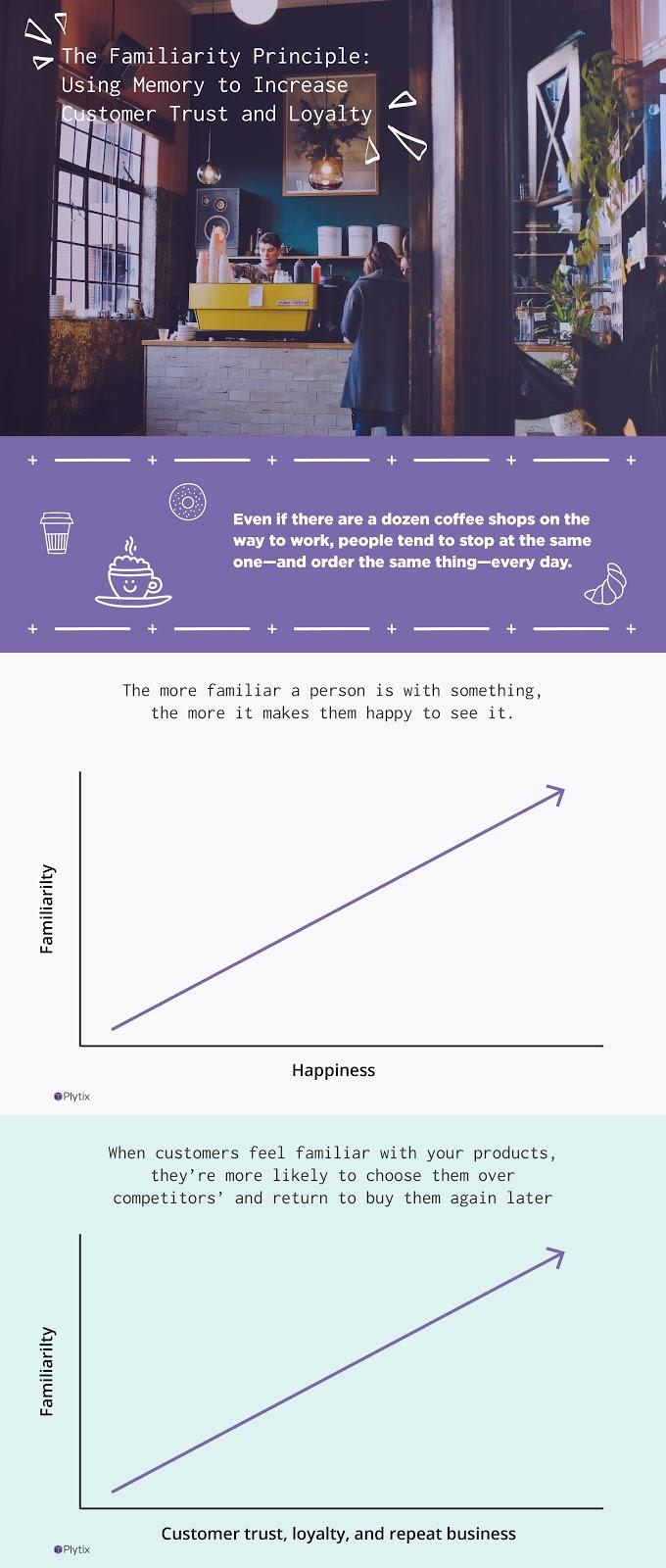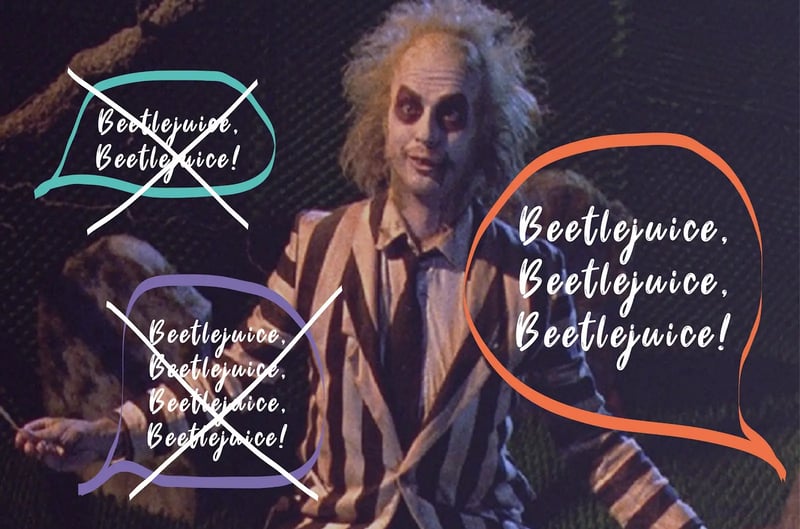That’s one of the most iconic lines from an iconic movie—just about anyone who’s seen Beetlejuice remembers it offhand. But what if we told you there’s a scientific reason the line is so memorable? And that you can use the same science to better market and sell products?
It’s called the familiarity principle, and, when applied to copywriting, it can help you gain more exposure for your brand, increase customer trust and loyalty, and increase your bottom line.
Read on to learn what the familiarity principle is, how you can apply it to your copywriting, and how, combined with the right assets and great product details, that will get more of your products sold.
The Familiarity Principle: What is it?
In the simplest terms, the familiarity principle is the tendency people have to remember and develop a preference for things they’re more familiar with. This principle can apply to people, products, or ideas. The more familiar people are with something, the more comfortable they’ll be with it, and the more likely they are to choose it and come back to it over and over.
When you apply this to products, you can see how it checks out. The more people are familiar with a product, the more likely they are to choose that product over a different one, and then keep coming back to that product over and over.

In other words, people are creatures of habit, and the familiarity principle is the science that explains why. It’s like how, even though there are a dozen coffee shops on your way to work, you always stop at the same one, and always order the same thing. You’re familiar with that shop and that order, so you like it, so you keep coming back to get it. Simple, right?
So using the familiarity principle to boost product sales will mean people choose your products over your competitors’ and become repeat customers for your business. But how do you get customers familiar with your products before they buy them?
How to Use the Familiarity Principle in Copywriting
There are a lot of different ways to use the familiarity principle to better market your products. Here are some common tactics retailers already use:
- Cognitive fluency: The easier something is to understand, the more likely people are to believe it. Product copy should be written in easy-to-understand layman's terms, in a clean, clear font.
- Prototypicality: Our brains naturally want to compare new things to things we already know and understand. So when a customer encounters your product for the first time, you want them to see how it’s similar to other products they already know. If there’s specific language that other sellers in your industry use to market their products, you should try to use that language too.
- Habit: Psychologically speaking, humans tend to stick to what they know. If a customer has ordered from a certain brand before and not had a bad experience, they’re likely to order from that brand again, because habits are hard to break.
While all of these can be used to increase familiarity in your product copy, we’re going to focus on one, simple trick that anyone can implement.
To harness the power of the familiarity principle in your product copy, you have to be unoriginal.
And by that, we mean you have to be repetitive.
The simplest way to insert the familiarity principle into your product copy is to repeat certain key information throughout your copy, thus making the people who read your copy more familiar with that key information. That makes them feel like they’re more familiar with your products, and the result is more conversions.
Think about it—repetition is a time-tested way of committing information to memory.
There’s not really a deep, scientific reason for why, but we know repetition works. From that trick where you repeat the name of a person you’ve just met immediately after they tell it to you so you’re more likely to remember it later, to studying for a science final with flashcards, repetition helps information stick in our brains.
But that doesn’t necessarily mean you can repeat the same phrase three times in a row like Beetlejuice and expect to sell more products.

(Don’t do this. This is weird)
How to Use Repetition in Your Copy—Naturally
The sweet spot for repetition in copy seems to be repeating the same information three times, which makes sense. It’s not “Beetlejuice, Beetlejuice,” or “Beetlejuice, Beetlejuice, Beetlejuice, Beetlejuice.”

But that does not mean you should pick some information and just repeat it three times in a row in your copy, like that phone case seller did. If your readers can tell you’re using repetition to lure them in, they’ll become wary and it won’t work. You need to use repetition skillfully, so readers aren’t consciously aware of what you’re doing.
The easiest way to do this is to pick the most important key point about your product, and then repeat that point about three times throughout that copy, but with the wording and phrasing changed slightly each time. This keeps the copy fresh—and keeps readers from knowing immediately what you’re up to.
If you really want to get fancy, there are a number of different kinds of repetition traditionally used in literature and poetry that you can try to incorporate in your product copy. Give one of these a shot:
- Anadiplosis: Repeating the last word in a sentence or paragraph.
- Anaphora: Repeating words at the start of a sentence or paragraph.
- Epanalepsis: Repeating the same word or words at the beginning and the end of a sentence.
- Epimone: Repeating a single phrase (usually a question) to help stress a point.
- Epiphora: Repeating the same word at the end of each sentence or paragraph.
- Polyptoton: Repeating words that have the same root, but different suffixes.
Or, you know, you can keep it simple. Like this listing, which includes a paragraph that outlines all the important features of this cordless drill, followed by a bulleted list that repeats them. It’s subtle, and when the reader scans the list after reading the description, they’ll already be familiar with those key points. Familiarity = trust = conversions.

There are a lot of different ways you can play with this, but make sure you have a way to track important metrics and optimize your product copy so you’re getting as many conversions as possible.





